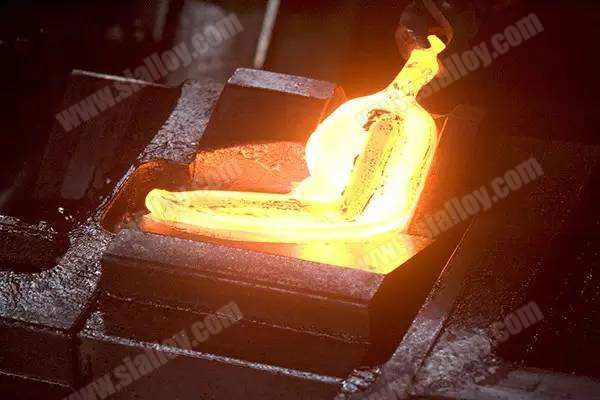the difference between casting and forging
Casting is a processing method in which the metal is melted into a liquid and then poured into a mold, cooled and solidified, and cleaned to obtain a casting of the desired shape. Various objects with complicated shapes can be made. Forging is a processing method that uses forging machinery to apply pressure to metal blanks to produce plastic deformation to obtain forgings with certain mechanical properties, certain shapes and sizes.
Forging is a processing method that uses forging machinery to apply pressure to metal blanks to produce plastic deformation to obtain forgings with certain mechanical properties, certain shapes and sizes. Forging (forging and stamping) is one of the two major components. Forging can eliminate defects such as as-cast looseness during metal smelting and optimize the microstructure. At the same time, due to the preservation of complete metal flow lines, the mechanical properties of forgings are generally better than those of castings of the same material. For the important parts of related machinery with high load and severe working conditions, forgings are mostly used in addition to simpler shapes that can be rolled, profiles or welded parts. Forging materials are mainly carbon steel and alloy steel with various compositions, followed by aluminum, magnesium, copper, titanium, etc. and their alloys. The original state of the material includes bar stock, ingot, metal powder and liquid metal. The ratio of the cross-sectional area of the metal before deformation to the cross-sectional area after deformation is called the forging ratio. Correct selection of forging ratio, reasonable heating temperature and holding time, reasonable initial forging temperature and final forging temperature, reasonable deformation amount and deformation speed have a great relationship with improving product quality and reducing cost. Generally, small and medium forgings use round or square bars as blanks. The grain structure and mechanical properties of the bar are uniform and good, the shape and size are accurate, and the surface quality is good, which is convenient for mass production. As long as the heating temperature and deformation conditions are reasonably controlled, forgings with excellent properties can be forged without large forging deformation.
Ingots are only used for large forgings. The ingot is a cast structure with large columnar crystals and a loose center. Therefore, it is necessary to break the columnar crystals into fine grains through large plastic deformation, and compact the looseness to obtain excellent metal structure and mechanical properties.
The manufacturing process of casting and forging is different. Forging is a processing method that uses forging machinery to apply pressure to metal blanks to produce plastic deformation to obtain forgings with certain mechanical properties, certain shapes and sizes. Forging (forging and stamping) One of the big components. Casting is a method of pouring liquid metal into a casting cavity suitable for the shape of the part, and after it has cooled and solidified, the part or blank is obtained. Forging is generally used in the processing of parts of a certain shape and size. The cost of casting is low, but it can be used in the processing of parts with complex shapes.
 中文
中文




